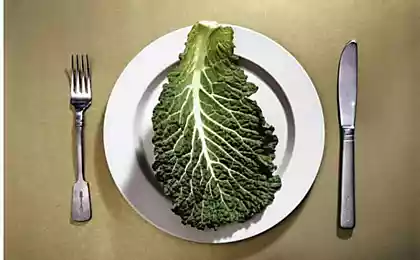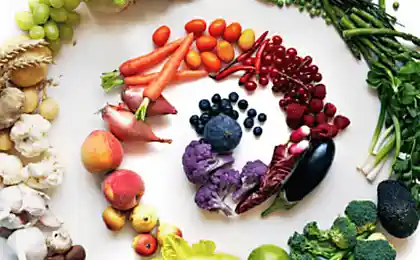1136
Product compatibility table to "separate food"
Original table combination of food Herbert Shelton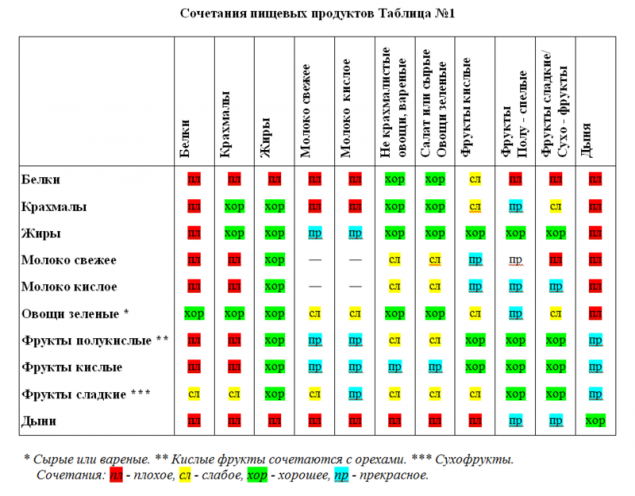
You can often hear and even to read serious works of famous scientists, that everything what is written in Shelton, not feasible or difficult to implement, especially in our time and in our environment that its regulations are too strict, inflexible, etc. and indeed, to follow these rules of food, not everyone can.
But thanks to the simplified table D. Shelton, edited by I. I. Litvina, fans of separation of power becomes more and more.
"Table of health", compiled by I. I. Litvina, became very popular and now commonly called the "compatibility table" or "table of separation of power". When talking about the table of food combining, referring to this table, not the Shelton.
Product compatibility table for a "separation of power" (edited by Litvina)
Products are divided into categories that are assigned numbers corresponding to the row number and the column number in the table
(for example:
Look at the intersection of the row and column corresponding to the rooms
(the intersection of row 7 and column No. 14 in the same way as the intersection of line number 14 and column No. 7 correspond to the "red" result, which means that these two categories of products not compatible with each other).
The result about the compatibility of Your chosen products will correspond to the result of the main table:
The category "SOUR FRUITS, TOMATOES" are:

MEAT, POULTRY, FISH
Count the first and perhaps most important, as it is easiest to break the rules of compatibility, and, moreover, with the greatest harm to health.
Each enzyme produced in the human intestinal tract, has a specific purpose. I. P. Pavlov spoke of "milk juice", "meat juice", "bread juice". Thus, the nature of the food determines the composition allocated to its processing enzymes. But this is only one side of the case.
There is, moreover, incomprehensible and perfect the mechanism of release of these juices at the time:
Moreover, the strength of the juice quantity, acidity, and hence activity of the gastric glands, and the speed of digestion vary depending on its quality.
The human body directs all its energy to the site, where we have the hardest work, taking it from other bodies, sometimes severely suffering from this. Some scientists-physiologists compare the efficiency of the digestive system with an efficiency of antediluvian engine.
Animal proteins are the most difficult to digest food. This is why so many "failures" in the first column. They are alarming, and this is already a great benefit. Does not deserve the sympathy and help of the eternal workers of our body — the digestive organs, does not stop its work either day or night, when they are just a little slow?
The words "meat", "bird", "fish" added the word "lean". The fact that both Shelton and all nutritionists-naturopaths believe that during the processing of these products, you must remove all external fat and internal vytaplivaete itself, if you cook meat on the grill or on the barbecue way — over an open fire.
For meat of all kinds is very favorable combination of green and non-starchy vegetables. G. Shelton believes that this combination neutralizes the harmful properties of animal proteins, helps their digestion and excretion of excess cholesterol from the blood, which is particularly important for the prevention of cardiovascular diseases.
As for starchy vegetables (for details about them see below), the combination of animal proteins with them is not ideal, but it is still better than the combination of bread, potatoes, cereals, pasta.
Fish all nutritionists-naturopaths believe the same trudnosmyvaemye animal protein, like meat, but maybe the attitude is a bit more lenient. At least yogi thought that fish consumption does not prevent serious pursuits asanas (as opposed to meat), and Bragg, a staunch vegetarian, admitted that a few times a year eating freshly caught fish.
Alcohol in combination with animal protein brings great harm: it precipitates the pepsin, necessary for digestion.
Often the question arises: why is the combination of meat with seemingly related animal proteins — milk, eggs, cottage cheese, cheeses evaluated in the table is negative (if the system was a scale, then standing here would not even "deuce", and "unit")? Each of them, as mentioned above, requires a special digestive secretions and different time for the most active digestion. Unfortunately, in our daily diet (especially in public, hospital, sanatorium) and in the "culinary masterpieces" proteins of different nature often mixed.
LEGUMES (BEANS, PEAS, LENTILS)
It's quite complex and even controversial product, requiring combination with other kinds of food much attention. However, it should be borne in mind that the green beans and green peas do not belong to this category: they belong to non-starchy vegetables and is compatible with all products except milk (and that this ban is not strict).
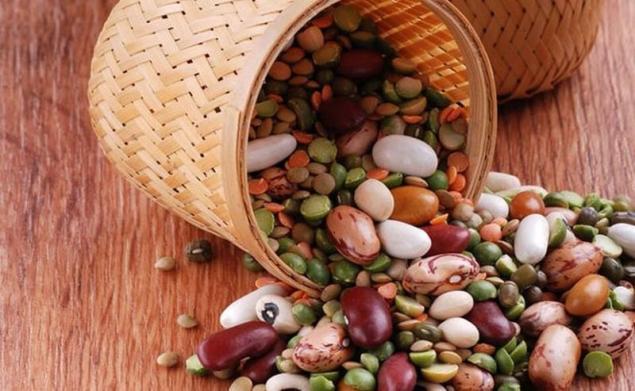
And yet, beans, peas, lentils should not be excluded from the diet, as it is a rich source of vegetable protein, similar in composition to the "slaughter meat".
On the other hand, legumes have a rich content of starchy substances. This causes legkosti of assimilation, requiring significant work of the gastrointestinal tract. Features compatibility leguminous with other products explains, thus, their dual nature.
As starches, they are well combined with fats, especially with easy to digest vegetable oil and sour cream (which nutritionists-naturopaths are somehow warmer than other animal fats). Of course, good beans with various herbs and starchy vegetables.
BUTTER AND CREAM
These products are in their origin are one dimensional (at least should be). The combination of their sour cream is also acceptable for the same reason. Considering the compatibility of animal proteins with fats, Shelton gives the results of the researches of many physiologists and nutritionists, showing the slowing effect of fat on digestion, which of course, leads to a significant tension of all systems of the body.
Even such protein foods like nuts or cheese, by themselves, contain almost 50% fat, difficult to digest. Only the abundance of green and non-starchy raw vegetables to mitigate the adverse combination of protein and fat.
For obvious logical reasons, the combination of, for example, cheese with butter is acceptable, but why consume so much animal fat in one meal?..
With all products containing starch, butter and cream (like all fats) give a good mix.
Sour CREAM
Referring to the category of fat, and not protein, as some people think, it is incompatible with meat products, sugar, nuts (concentrated protein of plant origin) and, of course, with milk.
VEGETABLE OIL
As can be readily seen, some of the forbidden combinations of products unacceptable for us not even due to physiological incompatibility, and according to the traditional rules of cooking and... taste: in my head no one will come to use vegetable oil, sugar, cottage cheese, milk, cheese. And taste such prohibitions in the table at least half!
Vegetable oil is highly useful in food product, but only if it is used in its raw and unrefined form. Example logical combination: vegetable oil and nuts, contain a lot of fat of vegetable origin.
SUGAR, CONFECTIONERY
"Eat protein and starchy food at different times with sugars!" — the so-called Shelton one of the sections of his book. All sugars inhibit the secretion of gastric juice. For their digestion does not need either saliva or gastric juice: they are absorbed directly in the intestine. If sweets are eaten with other foods, for a long time lingering in the stomach, they very soon cause it fermentation and, moreover, reduce the mobility of the stomach. Sour belching, heartburn is the result of this process.

That is why it strongly supports Shelton against feeding children porridge with sugar, bread with jams and marmalades, sweet milk. Tonsillitis, gastritis, constipation, which often affected children today, he considers a direct result of feeding them so-called well-balanced food (sugar contains lots of calories, but nutritionists-naturopaths consider them "empty"), which causes constant fermentation in the digestive tract and, as a result, poisoning of the body.
"What good is to consume daily the theoretically required amount of calories? says Shelton. — If the food zabrasive and rots, it does not give their calories to the body." Such food provides the body with vitamins and minerals. Carbohydrates, instead of giving energy to the body, not go into monosaccharides, and in alcohol and acetic acid.
Confections, containing, in addition to sugary foods and white flour (dead product, devoid of all biologically active substances), bring even greater harm (desserts, sweet pies, buns etc.).
Category Sakharov G. Shelton took and honey, referring to the opinion of some researchers who found it adverse to the body acid. However, many modern scholars with this opinion do not agree. D. C. Jarvis, for example, explains (D. C. Jarvis. Honey and other natural products. Izd-vo "Apimondia", 1975) that the medical product has already been processed by the digestive apparatus bees; 20 min after ingestion, it is absorbed into the blood without burdening the liver and all other systems of the body (this is why athletes he advised to take honey about 30 minutes before the start of the competition).
BREAD, CEREALS, POTATOES
These are the foods that nutritionists-naturopaths call "starches" (sugar and starches are generally grouped together by a common concept — carbohydrates). To foods rich in starch should always be treated with great caution: the starch itself, in its pure form, is extremely difficult to digest product, and requires careful observance of the rules of compatibility. The graph is devoted to starches, does not look as bleak as, for example, counts of meat, sugar and milk, but the ban on the combination of animal proteins with starchy foods — this is the first and perhaps the most important law of separation of power.
Excessive sugar and starches, which are not mastered fully translated into energy, in the form of fat accumulate in the cells.
N. Walker warns that nezapravlenny the starch particles into the blood, thicken it and deposited on the walls of blood vessels.
Natural combination of proteins, starches and fats (milk, cereals, cream, etc.) easy to digest, but with random combinations, and even in large quantities, the body is difficult to handle. "Nature does not produce sandwiches!" says Shelton. And we add to this the burgers, and big Macs.
The first stage of digestion of protein and starchy foods are in different environments:
Therefore, nutritionists, and believe that especially indigestible such mixtures like sausages and patties, rolls, etc. the Glands that produce juices, intended for treatment of proteins, located in the lower part of the stomach, so when these juices start to interact with starchy foods, e.g., meat inevitably comes zabrasyvanii and rotting food. By doing in this way in the duodenum, food mass requires purification from the resulting poisons, and here are included the pancreas, gallbladder and liver, which literally toiling to save the body from the poison (if it is strong and healthy, then it is possible... from time to time), forgetting about your other duties entrusted to it by nature.
Shelton praises the British for the preservation of the traditions, particularly in food; they always eat the meat first, and then, after a while, the pudding. It should do, and we have all sorts of puddings instead of the traditional side dishes — potatoes, cereals, pasta, etc. it is Better not to mix these two products in one meal.
Bread nutritionists-naturopaths believe a separate meal (e.g., butter) and not a mandatory addition to every meal. However, the bread made from unrefined whole grains, the ratio is very forgiving: Shelton allows him to eat "in every possible wrong combinations", primarily with a variety of salads, regardless of their composition. The combination of all of foods rich in starch, fats is very beneficial for the digestive system, what determines a good attitude to the combination of fats with legumes and starchy vegetables.
Different pies have nutritionists on natural medicine, the attitude is: if you want to eat a piece of cake, then combine it with lots of salad of raw vegetables and nothing more don't eat this meal.
SOUR FRUITS, TOMATOES
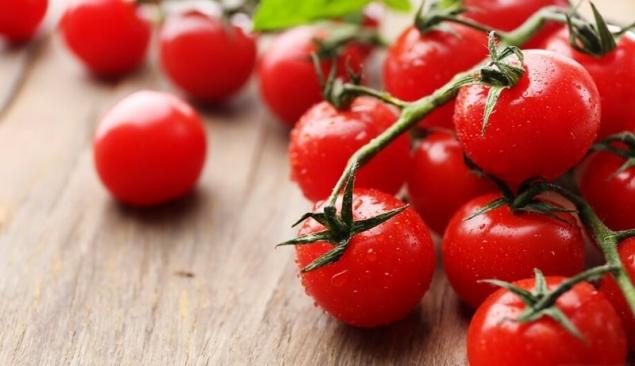
First of all the question arises why one category combined these seemingly very different products? The fact that the tomatoes stand out from all the vegetables high content of acids — citric, malic, oxalic. Thus, compatibility with other products they are adjacent to acidic fruits, which in all cases include citrus fruits and pomegranates, and all the rest — to taste.
"Eat protein and starchy food at different times with acid!", - writes Shelton. It emphasizes the harmfulness of these combinations. Indiscriminate consumption during meals, just before and after lemon, grapefruit, orange or tomato juices, vinegar, sour seasonings, etc. he believes the cause of many gastrointestinal diseases: the pepsin is destroyed fully, the action of salivary amylase stops.
Combinations of protein and starchy foods with acidic fruits and tomatoes at the table said "no", but Shelton believes that you can eat at least 30 minutes before a meal. Even small children are allowed to give the milk 30 minutes after acidic fruit and tomatoes.
Unfortunately, the tomatoes in daily life often eat incorrectly, that makes in some cases completely abandon this useful and affordable vegetable. But tomato season is in retreat, even the most inveterate constipation.
The drink is both sweet and very sour fruits, according to Shelton, is unfavorable for digestion. This condition is easy to perform.
POLYESSYE FRUIT
This column looks gloomy, however, still more fun than Earl "Sugar confectionery", because refined sugar is essentially a chemical that is a dead product and sweet fruits and dried fruits (which preserve all valuable qualities of fresh, but, of course, are in a more concentrated form) — "living cell" as they say in yoga. Acceptable combination and milk, nuts, but in small numbers, so this is hard for digestion.
Always keep in mind that fruits (sour and sweet) it's generally best to combineas they are digested in the intestine (there at least 15-20 minutes before eating). This rule Shelton believes are particularly strict in relation to melons and watermelons, which, being vegetable in origin, the peculiarities of absorption adjacent to the fruit.
It is known, what huge role in all systems of the body play natural vitamins and minerals. Decaying and fermenting in the stomach of the fruit (which is inevitable, when it has any other food) completely lose all of their valuable substances and meanwhile, the wrong people consuming them, sure that benefit.
GREEN VEGETABLES
These include the tops of all edible plants (parsley, dill, celery, leaves of radishes, beets), salad, wild white sand beach grass, and white cabbage, green onions, garlic, cucumbers, eggplant, sweet peppers, green peas.
Radishes, rutabaga, radish and turnip — it is like "polynomiality" vegetables, which are combinations of different products will probably join green and non-starchy vegetables than starchy foods. All green and non-starchy vegetables — a truly "green street"!
As noted the only unacceptable combination of their milk, and in favor of urban traditions in the villages used to drink milk, eating it with cucumbers and green onions from the garden, without any harm to the digestion.
STARCHY VEGETABLES
A significant content of starchy substances imposes on these vegetables some limitations compared to the green and non-starchy. In this column appeared a lot of "Threeness": better than anything else, but not perfect.
The combination of these vegetables with sugar is a strong fermentation, so there is a resolute refusal. The other combinations or good, or acceptable. Starchy vegetables the best addition to starchy foods.
MILK
Milk — a separate food, not a drink that accompanies Breakfast, lunch, dinner. In the animal world all the cubs when they eat milk, do not take any more food. This food is intended for feeding offspring.
Milk getting into the stomach, must curl under the influence of acidic juices — here is an indispensable condition of his digestion. If the stomach is another food, the particles of milk envelop her, shutting off the gastric juice. And until not digest curdled milk, food stays untreated, rots, the process of digestion is delayed. It is known that this property of milk is used in case of poisoning: milk coats of spoiled or poisonous food without letting it affect the body and thus to gain time for urgent action.
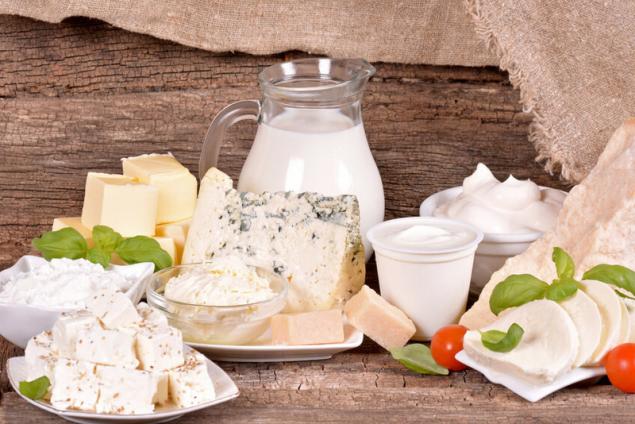
CHEESE, DAIRY PRODUCTS
They also should be combined with other types of food with caution. Cheese is not light food for seniors, and indigestible a complete protein (casein of milk, from which once made buttons).
Sour cream, cheese, cheese products, uniform with sour milk, so they are compatible.
As for sweet fruits and dried fruits, and eating them with yogurt, acidophilus, etc. will not bring harm, but subject to moderation. The Shelton liked to eat sour milk with berries.
CHEESE, CHEESE
Cheeses nutritionists-naturopaths wary due to their sharpness, high salinity and "overexposure" (which in itself leads to the accumulation of degradation products). Special hostility are the cheeses such as "Roquefort", as all cheeses have a strong smell. Processed cheese is also rejected as the product of unnatural, significantly redesigned. The most acceptable food is a young cheese such as a home, i.e. a cross between cottage cheese and cheese. Cheese is a useful protein product, but would need soaking in cold water from excessive salt.
Cheeses, and cheese are a combination of protein and fat in almost equal proportions, which slows down the process of decomposition of food in the stomach. Therefore, cheese, and cheese can be combined, for example, even with foods rich in starch, as well as sour fruits and tomatoes. In the first case — without much enthusiasm, and in the second one, as cheese and cheese cookery serve as the most common seasoning for vegetable dishes. Cheese and dairy products similar to cheese, so they are quite compatible.
Shelton praised the combination of cheese with green vegetables, but regretted that it was tasteless. Maybe for traditional American cuisine that was unusual? Although Shelton and objected to the cheese sandwiches, but according to his logic this combination is acceptable because of the high fat content.
EGGS
This protein product is not easy to digest and therefore always recommended by dieticians with restrictions. The combination of eggs and non-starchy green vegetables neutralizes the harm of high cholesterol content in the yolk. Acceptable combination with a small amount of "light" fat (sour cream), and starchy vegetables.
NUTS
G. Shelton in his book often puts them next to the cheese due to the rich content of fats. He believes that cheese, and nuts if they are not immediately digested, yet do not decompose as quickly as other products, in the presence of, for example, acids (vegetable and medicinal).
However, perhaps we should not forget that cheese contains animal fats and nuts are easily digestible vegetable, so the combination of nuts, cheese and fermented milk products looks somehow unnatural. It is also true that such combinations in everyday cooking appear very rarely, although sometimes there are some pretentious recipes of national cuisine.
No matter how controversial it may seem, some of the provisions put forward by G. Shelton (and with him many generations of doctors and scientists, starting from ancient times), it is clear that they deserve attention. Fortunately, in our time, no one would argue that the human stomach and the entire digestive tract is able to easily process and digest foods in various combinations.
Familiarity, for example, with the books of Herbert Shelton "the Right combination of foods" (San Antonio, 1971), "Orthotropy" (San Antonio, 1959) and "the best nutrition" (San Antonio, 1972) leaves no doubt that each of us hundreds, maybe thousands of times in my life involuntarily and unconsciously ate "Shelton", without even noticing it.
No one has ever got sick from that first ate the meat, and then potatoes, or cereal without sugar, or milk without the pie. But we definitely bring a huge harm when randomly eat everything, just to satisfy your hunger.
Also interesting: Cereals without gluten and simple recipes with them
Table of foods high in fiber
It is time to analyze the findings of Shelton from the point of view of our conditions and opportunities and to make the basic rules of food combining as a full component part of the system of natural healing. Doctor of medical Sciences I. P. Neumyvakin working in the field of space activities, noting the advantages of separation of power, wrote: "it's worth it when the prize is our health".published
From the book I. Litvina "health Cooking principles to recipes"
P. S. And remember, only by changing their consumption — together we change the world! ©
Source: cook-club.ru/publ/razdelnoe_pitanie_diety/1/tabliza_sovmestimosti_produktov_dlya_razdelnogo_pitaniya/1-1-0-7

You can often hear and even to read serious works of famous scientists, that everything what is written in Shelton, not feasible or difficult to implement, especially in our time and in our environment that its regulations are too strict, inflexible, etc. and indeed, to follow these rules of food, not everyone can.
But thanks to the simplified table D. Shelton, edited by I. I. Litvina, fans of separation of power becomes more and more.
"Table of health", compiled by I. I. Litvina, became very popular and now commonly called the "compatibility table" or "table of separation of power". When talking about the table of food combining, referring to this table, not the Shelton.
Product compatibility table for a "separation of power" (edited by Litvina)
Products are divided into categories that are assigned numbers corresponding to the row number and the column number in the table
(for example:
- row # 7 and column # 7 is correspond to the category "Bread, cereals, potatoes"
- line number 14 and column No. 14 correspond to the category "Cheese, sour-milk products").
Look at the intersection of the row and column corresponding to the rooms
(the intersection of row 7 and column No. 14 in the same way as the intersection of line number 14 and column No. 7 correspond to the "red" result, which means that these two categories of products not compatible with each other).
The result about the compatibility of Your chosen products will correspond to the result of the main table:
- Red — invalid combination
- The yellow color is a valid combination when undisturbed digestion,
- Green is a good combination.
The category "SOUR FRUITS, TOMATOES" are:
- Oranges, tangerines, grapefruits, pineapples, pomegranates, lemons, cranberries.
- Sour taste: apples, pears, plums, apricots, grapes.
- The tomatoes stand out from all the vegetables high content of acids — citric, malic, oxalic.
- Blueberries, fresh figs, mango, strawberries, raspberries, strawberries.
- Sweet taste: apples, cherries, plums, grapes, apricots, peaches, pears.
- Bananas, dates, persimmons, figs.
- All dried fruit, dried melon, raisins, nutmeg, prunes, dried pear.
- Cabbage, cucumbers, eggplant, sweet peppers, green peas, lettuce, asparagus, courgettes, young pumpkin, green onions, garlic, wild white sand beach grass.
- The tops of all edible plants (parsley, dill, celery, radish tops, beet).
- Radishes, rutabaga, radish and turnip is "polynomiality" vegetables, which are combinations of different products will probably join green and non-starchy.
- Beet, carrot, horseradish, parsley roots and celery, pumpkin, zucchini and squash, cauliflower.

MEAT, POULTRY, FISH
Count the first and perhaps most important, as it is easiest to break the rules of compatibility, and, moreover, with the greatest harm to health.
Each enzyme produced in the human intestinal tract, has a specific purpose. I. P. Pavlov spoke of "milk juice", "meat juice", "bread juice". Thus, the nature of the food determines the composition allocated to its processing enzymes. But this is only one side of the case.
There is, moreover, incomprehensible and perfect the mechanism of release of these juices at the time:
- the strongest juice, necessary for digestion meat, stands out in the first hour of digestion,
- for bread — in three hours
- for milk — in the last hour.
Moreover, the strength of the juice quantity, acidity, and hence activity of the gastric glands, and the speed of digestion vary depending on its quality.
The human body directs all its energy to the site, where we have the hardest work, taking it from other bodies, sometimes severely suffering from this. Some scientists-physiologists compare the efficiency of the digestive system with an efficiency of antediluvian engine.
Animal proteins are the most difficult to digest food. This is why so many "failures" in the first column. They are alarming, and this is already a great benefit. Does not deserve the sympathy and help of the eternal workers of our body — the digestive organs, does not stop its work either day or night, when they are just a little slow?
The words "meat", "bird", "fish" added the word "lean". The fact that both Shelton and all nutritionists-naturopaths believe that during the processing of these products, you must remove all external fat and internal vytaplivaete itself, if you cook meat on the grill or on the barbecue way — over an open fire.
For meat of all kinds is very favorable combination of green and non-starchy vegetables. G. Shelton believes that this combination neutralizes the harmful properties of animal proteins, helps their digestion and excretion of excess cholesterol from the blood, which is particularly important for the prevention of cardiovascular diseases.
As for starchy vegetables (for details about them see below), the combination of animal proteins with them is not ideal, but it is still better than the combination of bread, potatoes, cereals, pasta.
Fish all nutritionists-naturopaths believe the same trudnosmyvaemye animal protein, like meat, but maybe the attitude is a bit more lenient. At least yogi thought that fish consumption does not prevent serious pursuits asanas (as opposed to meat), and Bragg, a staunch vegetarian, admitted that a few times a year eating freshly caught fish.
Alcohol in combination with animal protein brings great harm: it precipitates the pepsin, necessary for digestion.
Often the question arises: why is the combination of meat with seemingly related animal proteins — milk, eggs, cottage cheese, cheeses evaluated in the table is negative (if the system was a scale, then standing here would not even "deuce", and "unit")? Each of them, as mentioned above, requires a special digestive secretions and different time for the most active digestion. Unfortunately, in our daily diet (especially in public, hospital, sanatorium) and in the "culinary masterpieces" proteins of different nature often mixed.
LEGUMES (BEANS, PEAS, LENTILS)
It's quite complex and even controversial product, requiring combination with other kinds of food much attention. However, it should be borne in mind that the green beans and green peas do not belong to this category: they belong to non-starchy vegetables and is compatible with all products except milk (and that this ban is not strict).

And yet, beans, peas, lentils should not be excluded from the diet, as it is a rich source of vegetable protein, similar in composition to the "slaughter meat".
On the other hand, legumes have a rich content of starchy substances. This causes legkosti of assimilation, requiring significant work of the gastrointestinal tract. Features compatibility leguminous with other products explains, thus, their dual nature.
As starches, they are well combined with fats, especially with easy to digest vegetable oil and sour cream (which nutritionists-naturopaths are somehow warmer than other animal fats). Of course, good beans with various herbs and starchy vegetables.
BUTTER AND CREAM
These products are in their origin are one dimensional (at least should be). The combination of their sour cream is also acceptable for the same reason. Considering the compatibility of animal proteins with fats, Shelton gives the results of the researches of many physiologists and nutritionists, showing the slowing effect of fat on digestion, which of course, leads to a significant tension of all systems of the body.
Even such protein foods like nuts or cheese, by themselves, contain almost 50% fat, difficult to digest. Only the abundance of green and non-starchy raw vegetables to mitigate the adverse combination of protein and fat.
For obvious logical reasons, the combination of, for example, cheese with butter is acceptable, but why consume so much animal fat in one meal?..
With all products containing starch, butter and cream (like all fats) give a good mix.
Sour CREAM
Referring to the category of fat, and not protein, as some people think, it is incompatible with meat products, sugar, nuts (concentrated protein of plant origin) and, of course, with milk.
VEGETABLE OIL
As can be readily seen, some of the forbidden combinations of products unacceptable for us not even due to physiological incompatibility, and according to the traditional rules of cooking and... taste: in my head no one will come to use vegetable oil, sugar, cottage cheese, milk, cheese. And taste such prohibitions in the table at least half!
Vegetable oil is highly useful in food product, but only if it is used in its raw and unrefined form. Example logical combination: vegetable oil and nuts, contain a lot of fat of vegetable origin.
SUGAR, CONFECTIONERY
"Eat protein and starchy food at different times with sugars!" — the so-called Shelton one of the sections of his book. All sugars inhibit the secretion of gastric juice. For their digestion does not need either saliva or gastric juice: they are absorbed directly in the intestine. If sweets are eaten with other foods, for a long time lingering in the stomach, they very soon cause it fermentation and, moreover, reduce the mobility of the stomach. Sour belching, heartburn is the result of this process.

That is why it strongly supports Shelton against feeding children porridge with sugar, bread with jams and marmalades, sweet milk. Tonsillitis, gastritis, constipation, which often affected children today, he considers a direct result of feeding them so-called well-balanced food (sugar contains lots of calories, but nutritionists-naturopaths consider them "empty"), which causes constant fermentation in the digestive tract and, as a result, poisoning of the body.
"What good is to consume daily the theoretically required amount of calories? says Shelton. — If the food zabrasive and rots, it does not give their calories to the body." Such food provides the body with vitamins and minerals. Carbohydrates, instead of giving energy to the body, not go into monosaccharides, and in alcohol and acetic acid.
Confections, containing, in addition to sugary foods and white flour (dead product, devoid of all biologically active substances), bring even greater harm (desserts, sweet pies, buns etc.).
Category Sakharov G. Shelton took and honey, referring to the opinion of some researchers who found it adverse to the body acid. However, many modern scholars with this opinion do not agree. D. C. Jarvis, for example, explains (D. C. Jarvis. Honey and other natural products. Izd-vo "Apimondia", 1975) that the medical product has already been processed by the digestive apparatus bees; 20 min after ingestion, it is absorbed into the blood without burdening the liver and all other systems of the body (this is why athletes he advised to take honey about 30 minutes before the start of the competition).
BREAD, CEREALS, POTATOES
These are the foods that nutritionists-naturopaths call "starches" (sugar and starches are generally grouped together by a common concept — carbohydrates). To foods rich in starch should always be treated with great caution: the starch itself, in its pure form, is extremely difficult to digest product, and requires careful observance of the rules of compatibility. The graph is devoted to starches, does not look as bleak as, for example, counts of meat, sugar and milk, but the ban on the combination of animal proteins with starchy foods — this is the first and perhaps the most important law of separation of power.
Excessive sugar and starches, which are not mastered fully translated into energy, in the form of fat accumulate in the cells.
N. Walker warns that nezapravlenny the starch particles into the blood, thicken it and deposited on the walls of blood vessels.
Natural combination of proteins, starches and fats (milk, cereals, cream, etc.) easy to digest, but with random combinations, and even in large quantities, the body is difficult to handle. "Nature does not produce sandwiches!" says Shelton. And we add to this the burgers, and big Macs.
The first stage of digestion of protein and starchy foods are in different environments:
- proteins need an acidic environment, which is necessary for activation of pepsin enzyme involved in the digestion,
- and starch in an alkaline (amylase of saliva, etc.).
Therefore, nutritionists, and believe that especially indigestible such mixtures like sausages and patties, rolls, etc. the Glands that produce juices, intended for treatment of proteins, located in the lower part of the stomach, so when these juices start to interact with starchy foods, e.g., meat inevitably comes zabrasyvanii and rotting food. By doing in this way in the duodenum, food mass requires purification from the resulting poisons, and here are included the pancreas, gallbladder and liver, which literally toiling to save the body from the poison (if it is strong and healthy, then it is possible... from time to time), forgetting about your other duties entrusted to it by nature.
Shelton praises the British for the preservation of the traditions, particularly in food; they always eat the meat first, and then, after a while, the pudding. It should do, and we have all sorts of puddings instead of the traditional side dishes — potatoes, cereals, pasta, etc. it is Better not to mix these two products in one meal.
Bread nutritionists-naturopaths believe a separate meal (e.g., butter) and not a mandatory addition to every meal. However, the bread made from unrefined whole grains, the ratio is very forgiving: Shelton allows him to eat "in every possible wrong combinations", primarily with a variety of salads, regardless of their composition. The combination of all of foods rich in starch, fats is very beneficial for the digestive system, what determines a good attitude to the combination of fats with legumes and starchy vegetables.
Different pies have nutritionists on natural medicine, the attitude is: if you want to eat a piece of cake, then combine it with lots of salad of raw vegetables and nothing more don't eat this meal.
SOUR FRUITS, TOMATOES
- Oranges, tangerines, grapefruits, pineapples, pomegranates, lemons, cranberries.
- Sour taste: apples, pears, plums, apricots, grapes.
- The tomatoes stand out from all the vegetables high content of acids — citric, malic, oxalic.

First of all the question arises why one category combined these seemingly very different products? The fact that the tomatoes stand out from all the vegetables high content of acids — citric, malic, oxalic. Thus, compatibility with other products they are adjacent to acidic fruits, which in all cases include citrus fruits and pomegranates, and all the rest — to taste.
"Eat protein and starchy food at different times with acid!", - writes Shelton. It emphasizes the harmfulness of these combinations. Indiscriminate consumption during meals, just before and after lemon, grapefruit, orange or tomato juices, vinegar, sour seasonings, etc. he believes the cause of many gastrointestinal diseases: the pepsin is destroyed fully, the action of salivary amylase stops.
Combinations of protein and starchy foods with acidic fruits and tomatoes at the table said "no", but Shelton believes that you can eat at least 30 minutes before a meal. Even small children are allowed to give the milk 30 minutes after acidic fruit and tomatoes.
Unfortunately, the tomatoes in daily life often eat incorrectly, that makes in some cases completely abandon this useful and affordable vegetable. But tomato season is in retreat, even the most inveterate constipation.
The drink is both sweet and very sour fruits, according to Shelton, is unfavorable for digestion. This condition is easy to perform.
POLYESSYE FRUIT
- Blueberries, fresh figs, mango, strawberries, raspberries, strawberries.
- Sweet taste: apples, cherries, plums, grapes, apricots, peaches, pears.
- Bananas, dates, persimmons, figs, all dried fruit, dried melon, raisins, nutmeg, prunes, dried pear.
This column looks gloomy, however, still more fun than Earl "Sugar confectionery", because refined sugar is essentially a chemical that is a dead product and sweet fruits and dried fruits (which preserve all valuable qualities of fresh, but, of course, are in a more concentrated form) — "living cell" as they say in yoga. Acceptable combination and milk, nuts, but in small numbers, so this is hard for digestion.
Always keep in mind that fruits (sour and sweet) it's generally best to combineas they are digested in the intestine (there at least 15-20 minutes before eating). This rule Shelton believes are particularly strict in relation to melons and watermelons, which, being vegetable in origin, the peculiarities of absorption adjacent to the fruit.
It is known, what huge role in all systems of the body play natural vitamins and minerals. Decaying and fermenting in the stomach of the fruit (which is inevitable, when it has any other food) completely lose all of their valuable substances and meanwhile, the wrong people consuming them, sure that benefit.
GREEN VEGETABLES
These include the tops of all edible plants (parsley, dill, celery, leaves of radishes, beets), salad, wild white sand beach grass, and white cabbage, green onions, garlic, cucumbers, eggplant, sweet peppers, green peas.
Radishes, rutabaga, radish and turnip — it is like "polynomiality" vegetables, which are combinations of different products will probably join green and non-starchy vegetables than starchy foods. All green and non-starchy vegetables — a truly "green street"!
As noted the only unacceptable combination of their milk, and in favor of urban traditions in the villages used to drink milk, eating it with cucumbers and green onions from the garden, without any harm to the digestion.
STARCHY VEGETABLES
- These include beets, carrots, horseradish, parsley roots and celery, pumpkin, zucchini and squash, cauliflower.
A significant content of starchy substances imposes on these vegetables some limitations compared to the green and non-starchy. In this column appeared a lot of "Threeness": better than anything else, but not perfect.
The combination of these vegetables with sugar is a strong fermentation, so there is a resolute refusal. The other combinations or good, or acceptable. Starchy vegetables the best addition to starchy foods.
MILK
Milk — a separate food, not a drink that accompanies Breakfast, lunch, dinner. In the animal world all the cubs when they eat milk, do not take any more food. This food is intended for feeding offspring.
Milk getting into the stomach, must curl under the influence of acidic juices — here is an indispensable condition of his digestion. If the stomach is another food, the particles of milk envelop her, shutting off the gastric juice. And until not digest curdled milk, food stays untreated, rots, the process of digestion is delayed. It is known that this property of milk is used in case of poisoning: milk coats of spoiled or poisonous food without letting it affect the body and thus to gain time for urgent action.

CHEESE, DAIRY PRODUCTS
They also should be combined with other types of food with caution. Cheese is not light food for seniors, and indigestible a complete protein (casein of milk, from which once made buttons).
Sour cream, cheese, cheese products, uniform with sour milk, so they are compatible.
As for sweet fruits and dried fruits, and eating them with yogurt, acidophilus, etc. will not bring harm, but subject to moderation. The Shelton liked to eat sour milk with berries.
CHEESE, CHEESE
Cheeses nutritionists-naturopaths wary due to their sharpness, high salinity and "overexposure" (which in itself leads to the accumulation of degradation products). Special hostility are the cheeses such as "Roquefort", as all cheeses have a strong smell. Processed cheese is also rejected as the product of unnatural, significantly redesigned. The most acceptable food is a young cheese such as a home, i.e. a cross between cottage cheese and cheese. Cheese is a useful protein product, but would need soaking in cold water from excessive salt.
Cheeses, and cheese are a combination of protein and fat in almost equal proportions, which slows down the process of decomposition of food in the stomach. Therefore, cheese, and cheese can be combined, for example, even with foods rich in starch, as well as sour fruits and tomatoes. In the first case — without much enthusiasm, and in the second one, as cheese and cheese cookery serve as the most common seasoning for vegetable dishes. Cheese and dairy products similar to cheese, so they are quite compatible.
Shelton praised the combination of cheese with green vegetables, but regretted that it was tasteless. Maybe for traditional American cuisine that was unusual? Although Shelton and objected to the cheese sandwiches, but according to his logic this combination is acceptable because of the high fat content.
EGGS
This protein product is not easy to digest and therefore always recommended by dieticians with restrictions. The combination of eggs and non-starchy green vegetables neutralizes the harm of high cholesterol content in the yolk. Acceptable combination with a small amount of "light" fat (sour cream), and starchy vegetables.
NUTS
G. Shelton in his book often puts them next to the cheese due to the rich content of fats. He believes that cheese, and nuts if they are not immediately digested, yet do not decompose as quickly as other products, in the presence of, for example, acids (vegetable and medicinal).
However, perhaps we should not forget that cheese contains animal fats and nuts are easily digestible vegetable, so the combination of nuts, cheese and fermented milk products looks somehow unnatural. It is also true that such combinations in everyday cooking appear very rarely, although sometimes there are some pretentious recipes of national cuisine.
No matter how controversial it may seem, some of the provisions put forward by G. Shelton (and with him many generations of doctors and scientists, starting from ancient times), it is clear that they deserve attention. Fortunately, in our time, no one would argue that the human stomach and the entire digestive tract is able to easily process and digest foods in various combinations.
Familiarity, for example, with the books of Herbert Shelton "the Right combination of foods" (San Antonio, 1971), "Orthotropy" (San Antonio, 1959) and "the best nutrition" (San Antonio, 1972) leaves no doubt that each of us hundreds, maybe thousands of times in my life involuntarily and unconsciously ate "Shelton", without even noticing it.
No one has ever got sick from that first ate the meat, and then potatoes, or cereal without sugar, or milk without the pie. But we definitely bring a huge harm when randomly eat everything, just to satisfy your hunger.
Also interesting: Cereals without gluten and simple recipes with them
Table of foods high in fiber
It is time to analyze the findings of Shelton from the point of view of our conditions and opportunities and to make the basic rules of food combining as a full component part of the system of natural healing. Doctor of medical Sciences I. P. Neumyvakin working in the field of space activities, noting the advantages of separation of power, wrote: "it's worth it when the prize is our health".published
From the book I. Litvina "health Cooking principles to recipes"
P. S. And remember, only by changing their consumption — together we change the world! ©
Source: cook-club.ru/publ/razdelnoe_pitanie_diety/1/tabliza_sovmestimosti_produktov_dlya_razdelnogo_pitaniya/1-1-0-7


